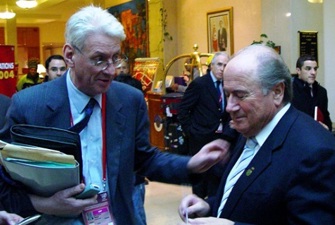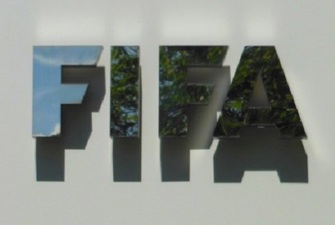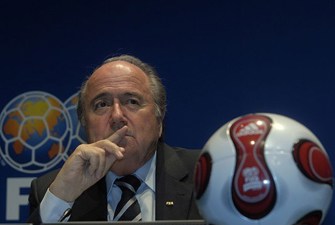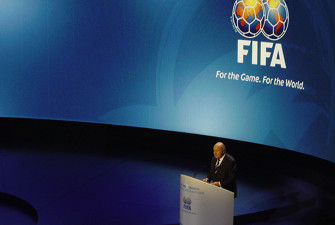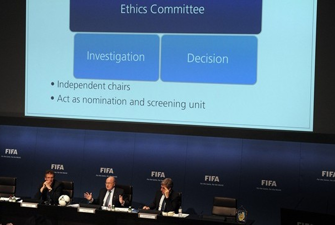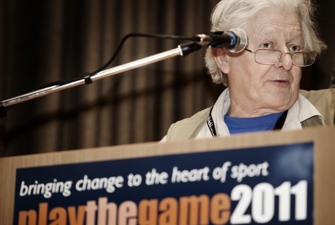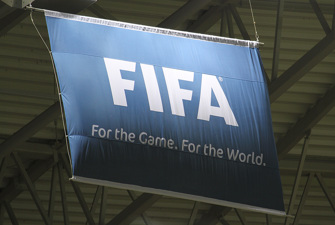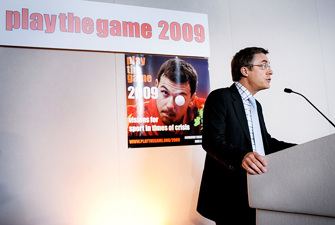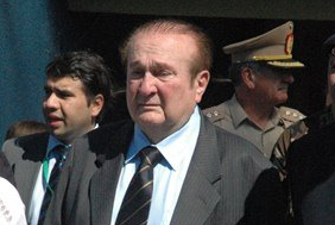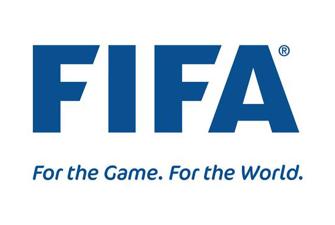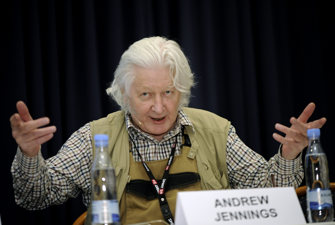The fall of ISL
Horst Dassler built the world's most influential sport marketing company, ISL. But at the turn of the millenium, ISL lost market shares and began purchasing television rights on a large scale. This led to a cash flow crisis that ultimately felled the company which leaves a debt of 300 million dollars.
In the beginning of the 1970's a German businessman watched a Wimbledon final between Ilie Nastase and Stan Smith, who were both sponsored by his clothes company Adidas and both dressed in white shirts with a small and discreet logo. There was a huge interest in the match and it was broadcast to a lot of people all over the world. The man had an idea: Why not capitalize on the great attention to the two tennis players and sell the large white space on the front or back of the players’ shirts to the company willing to pay the highest price?
The man was Horst Dassler and during the following 10 years he and his partner Patrick Nally had revolutionized the financial foundation of international sports in general – and football, athletics and the Olympic Games in particular.
Horst Dassler was the founding father of
International Sport and Leisure (ISL)
- the most influential sports marketing agency. During the 1980's and 1990's ISL held the biggest and most important broadcasting rights to major sports events like the Olympic Games, the football World Cups and the World Championships in athletics, and it made billions of dollars due to its monopoly of commercial rights to the events.
Dassler was known for carefully monitoring top executives in international sport in order for his company to wield influence. In the initial and successful years ISL succeeded in making itself indispensable to the large international sports federations, for whom the new sports industry was an unknown area. ISL possessed the insight and expert knowledge in the newly emerging industry combined with a well-developed and diverse network of personal contacts.
ISL buys up tv-rights for billions
With the millennium rapidly approaching ISL met more and more opposition in the sports marketing industry. More companies wanted a bit of the billion-dollar-cake and the international sports federations hired their own marketing experts, so they could take care own their own business and be independent of the expensive intermediary.
ISL thus lost the rights to the Olympic Games in 1995 and had to be creative and think along new lines to keep its position in the market and maintain the annual turnover. Senior executive Jean-Marie Weber, who had been Dassler’s personal assistant until his death in 1987, was forced to go shopping for televison rights with the big cheque-book.
In 1998 he bought the commercial rights to the World Volleyball Championships, the World Swimming Championships and the Gymnastics Championships. In 1998 he added the the American CART race-series to the company’s dossier at the significant amount of 300 million US$ plus the television rights to events under the auspices of the International Basketball Federation.
The involvement in football was increased, and ISL also entered commercial rights deals with the great Brazilian football clubs Flamenco and Gremio.
Finally in 1999 Weber signed the biggest ever marketing and television contract in tennis with the Association of Tennis Professionals (ATP) securing the sport a so far unknown exposure and a stunning amount of 1.2 billion US$ over a 10-year period.
ISL is felled by cash flow problems
The only problem was that ISL did not have the liquid assets to pay the great amounts of money they had just signed contracts for. ISL was in other words in deep financial troubles.
The immediate cause of ISL's liquidity crisis was the figurative own-goal made by signing the tennis contract. Contrary to expectation, ISL turned out to have great difficulty in selling the television rights for the nine Masters tournaments on the European TV-market. In fact they only succeeded in striking deals with some small and insignificant pay-per-view channels.
Confronted with suggestions that the company might have paid too much on the tennis deal, ISL Worldwide managing director Daniel Beauvois admitted in Marketing Week late in December 1999:
"We know we will probably lose money in the first year. But we are confident we can make this event work. Some existing deals are precluding us from approaching new sponsors, but when these expire - in the coming year - we will be able to intensify our activities.”
In spite of the optimism displayed by the managing director, insiders estimated that ISL could lose 50-70 million dollars in the first year alone on the tennis deal.
In January 2001 ISL had to admit to its tennis partner ATP that the company was unable to pay what it owed. In April ISL tried to break the deal by paying ATP between 150 and 160 million dollars.
ISL’s long-standing partner – the International Football Federation, FIFA – had great interest in seeing ISL through its financial crisis. FIFA went far – with an implicit risk for their own economy – and lent ISL money guaranteed in the individual sponsor contracts to the World Cup.
ISL itself was also creative in finding ways to handle their massive cash flow problems. According to the trade paper Sports Business, ISLmanaged to raise much needed capital in February 2001 by selling their marketing rights to the World Cups in 2002 and 2006 to a self-created company called ISL Football AG for 66 million dollars.
On the brink of a petition for bankruptcy in April 2001, ISL asked the Court in Zug for three months respite arguing that an unnamed investor was ready with a bailout package as a ‘last second save’.
The unnamed investor appeared to be the French Vivendi-group. However, after a close reading of its accounts Vivendi turned down ISL’s ‘cry for help’.
Finally on 21 May 2001 ISL was declared bankrupt at the Zug Court in Switzerland leaving a debt of 300 million dollars.
